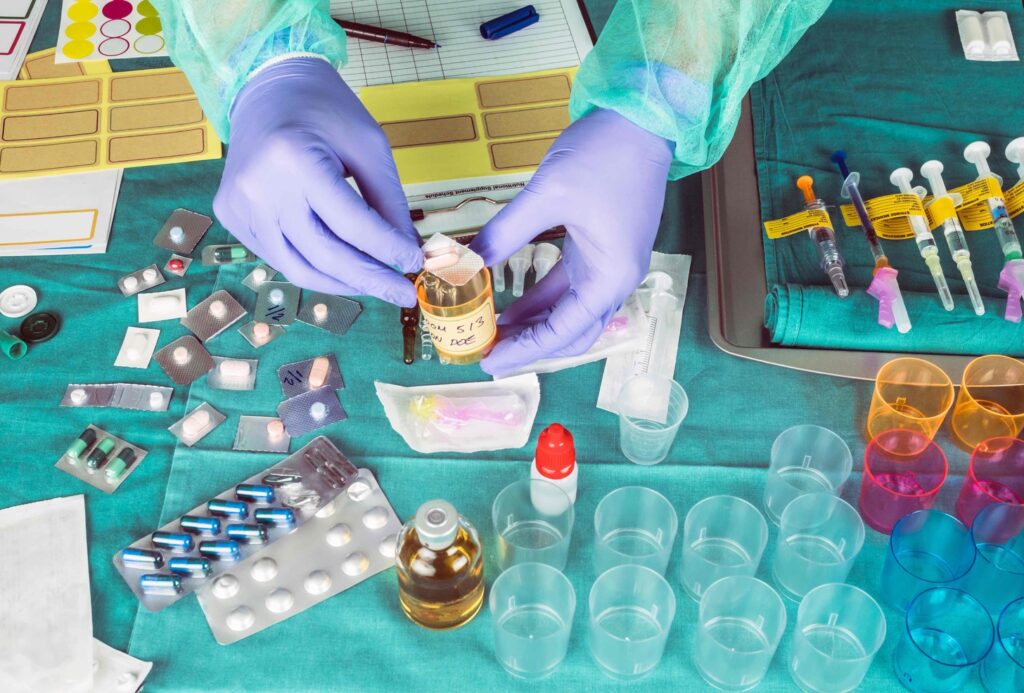Last Updated on November 3, 2025 by mcelik

At Liv Hospital, we know how hard it is to understand chemotherapy for brain cancer. We help patients and families find the best treatments. Our team uses the latest research to guide care.
Chemotherapy uses special drugs like temozolomide and PCV to fight brain tumor cells. We’re also exploring new treatments, like ORIC-114, to tackle brain cancer mutations.

Brain tumors are complex and need special treatments. They require a mix of medical fields and custom therapies.
Every patient’s case is unique. Knowing the details of their tumor is key to a good treatment plan. This includes the tumor type, size, and the patient’s health.
Brain tumors can be benign or cancerous. Glioma and glioblastoma are common cancers that need strong treatments. The tumor’s location, size, and genetics help decide the best treatment.
Each brain tumor reacts differently to treatments. For example, glioblastoma chemotherapy drugs are used for glioblastoma. Glioma chemotherapy is for gliomas. Knowing these differences helps choose the best treatment.
Chemotherapy is key in treating brain cancer, like glioblastoma. Brain tumor chemotherapy drugs target fast-growing cancer cells. They slow tumor growth and ease symptoms.
The right chemotherapy depends on the tumor type, grade, and patient health. Brain cancer treatment drugs can be taken by mouth or given through an IV. The treatment plan is made just for the patient.
We use chemotherapy as part of a full treatment plan. This plan may also include surgery, radiation, and other treatments. By combining these, we can better treat brain cancer and improve patients’ lives.

Chemotherapy for brain cancer targets and kills cancer cells. It’s a systemic treatment that uses drugs. It helps control tumor growth and ease symptoms.
The blood-brain barrier (BBB) is a big challenge in treating brain cancer. It’s a protective layer that keeps many drugs out. This barrier makes it hard for chemotherapy to reach the tumor.
Scientists are finding new ways to get past this barrier. For example, Oric Pharmaceuticals is working on drugs that can get into the brain. These drugs aim to target cancer cells more effectively.
Chemotherapy drugs stop cancer cells from dividing. Chemotherapy tablets for brain tumours or drugs given through a vein target fast-growing cells. This slows down or stops tumor growth.
Each chemotherapy drug works differently. Some, like Temozolomide, damage the DNA of cancer cells. This stops them from making more cells. Other drugs may stop cells from dividing, which also slows tumor growth.
Understanding how chemotherapy works helps us see why research is so important. New drugs and ways to deliver them are key to better treatment for patients.
Chemotherapy is key in treating brain cancer. Several drugs are effective, each with its own way of working. They help fight brain cancer in different ways.
Temozolomide is a brain cancer chemo pill that works well for some brain tumors. It stops cancer cells from making copies of themselves. “Temozolomide has become a cornerstone in the treatment of glioblastoma and other malignant gliomas,” showing its vital role.
The PCV therapy is also effective against brain cancer. It combines procarbazine, lomustine, and vincristine. These drugs target cancer cells in different ways. PCV is great for some gliomas and can improve patient outcomes.
Other drugs like carmustine and lomustine are used too. Carmustine is placed in the tumor during surgery. Lomustine is taken by mouth and is good for some brain tumors.
New treatments, like ORIC-114, are being developed. They target specific mutations in brain cancers. This shows how treatment for brain cancer is always getting better.
It’s key for patients to know how brain tumor chemotherapy is given. There are different ways to get this treatment, each with its own ups and downs.
Oral chemotherapy, like chemo tablets for brain tumors, is easy for many to take. These pills are swallowed, making it simple for patients to treat themselves at home. This method lets patients keep their daily life going without big changes.
But, taking these pills exactly as told is very important. Patients must stick to their schedule and see their doctors often. This helps make sure the treatment works well and handles any side effects.
Intravenous chemotherapy is another way to treat brain tumor chemotherapy treatment. It puts the drugs straight into the blood through a vein. This method is good for some brain tumors because it can use strong doses of medicine.
This treatment is given in places like hospitals or clinics. Doctors and nurses are there to watch for any bad reactions. They make sure the treatment is safe and works well.
Oral and intravenous chemotherapy both have roles in chemotherapy for brain tumor plans. The choice depends on the tumor type, the patient’s health, and what they prefer.
Knowing how long chemotherapy for brain cancer lasts is key for patients. It’s a big part of treatment and helps patients get ready. Understanding it can make the process easier to handle.
Most brain cancer treatments involve six cycles of chemotherapy. Each cycle is a few weeks long, with breaks in between. For example, Temozolomide, a common drug, is given for 6 cycles, each lasting 28 days.
Here’s what a typical treatment schedule looks like:
| Cycle | Days 1-5 | Days 6-28 |
|---|---|---|
| 1-6 | Temozolomide administration | Rest period |
While six cycles are common, treatment length can change. This depends on the cancer type, stage, and the patient’s health. Chronic inflammation can also affect treatment success, so managing it is key.
“The duration of chemotherapy is tailored to the individual patient’s needs and response to treatment. Factors such as tumor type, patient health, and treatment response all play a role in determining the length of chemotherapy.”
Things that can make treatment longer or shorter include:
We closely watch patients’ progress and adjust treatment plans as needed. Our aim is to treat effectively while reducing side effects and improving life quality.
Chemotherapy for brain cancer changes a lot depending on the type. At our place, we make sure to treat each patient based on their cancer’s details.
“The treatment of brain cancer is not one-size-fits-all,” say top oncologists. The drugs and plans used depend on the tumor type, grade, and the patient’s health.
Glioblastoma is a very aggressive brain cancer needing strong treatment. The main drug for it is Temozolomide, often paired with radiation. This combo has shown great results for patients.
The usual treatment is six cycles of Temozolomide taken by mouth. For more on aggressive cancers, check out our guide on the deadliest cancers.
How we treat glioma changes with the tumor’s grade and type. Low-grade gliomas might get chemotherapy to slow them down. High-grade gliomas need stronger treatments.
The PCV combination therapy, with Procarbazine, Lomustine, and Vincristine, is used for some gliomas. We customize the treatment for each patient, looking at tumor genetics and health.
“Advances in chemotherapy have greatly helped glioma patients,” says research. This shows the value of ongoing studies and personalized care.
Knowing the brain cancer type and its details helps us find better chemotherapy plans. This leads to better results for patients.
Brain cancer treatment often uses a mix of methods, with chemotherapy being key. We help patients through these complex plans, making sure they get care that fits their needs.
Chemotherapy after surgery aims to kill any cancer cells left behind. It helps lower the chance of cancer coming back and can increase survival chances. Adjuvant chemotherapy is very important for aggressive brain tumors, like glioblastoma.
We focus on the whole patient, not just the cancer. We care for their health and well-being too.
Concurrent chemoradiation therapy means using chemotherapy and radiation at the same time. It makes both treatments work better together. This method is often used for aggressive brain tumors.
Chemotherapy is an option for patients with brain tumors that come back. We look at many things, like the tumor type and the patient’s health, to choose the best chemotherapy. Trying a chemotherapy drug again or a new one can help with recurrent tumors.
We work with patients to create a treatment plan that’s right for them. This can include chemotherapy alone or with other treatments. By using treatments together, we aim to improve patient outcomes and quality of life.
Managing chemotherapy side effects is key for brain tumor patients to keep their quality of life. Chemotherapy is vital for treating brain tumors but can cause side effects. At our institution, we focus on caring for these challenges fully.
Chemotherapy for brain tumors can cause many side effects, from mild to severe. Common ones include:
Managing these side effects needs a multi-faceted approach. We work with patients to create personalized care plans. This may include medication, lifestyle changes, and supportive therapies. For instance, chronic inflammation, a side effect of some treatments, is managed through medication and lifestyle adjustments.
Long-term considerations are vital when undergoing chemotherapy for brain tumors. Patients and their caregivers should be aware of possible long-term side effects, such as:
We stress the importance of follow-up care to monitor and manage these effects. Our team helps patients develop a follow-up plan that meets their needs.
a renowned oncologist, once said, “The key to successful cancer treatment lies not just in eliminating the cancer, but in preserving the patient’s quality of life throughout the process.”
“The key to successful cancer treatment lies not just in eliminating the cancer, but in preserving the patient’s quality of life throughout the process.”
By focusing on treating brain tumors and managing side effects, we offer our patients the care they need. This helps them navigate their treatment journey successfully.
New treatments like targeted therapies and immunotherapies are changing the game for brain cancer patients. Companies like Oric Pharmaceuticals are leading the way with these innovative treatments. They aim to create better options for fighting brain cancer.
Targeted therapies have made a big impact on cancer treatment, including brain cancer. Bevacizumab is a key player, stopping tumors from getting the blood they need to grow. For more on bevacizumab, check out this resource.
New targeted therapies are being looked at for brain cancer. They aim to target specific genetic changes or pathways that tumors rely on.
| Targeted Therapy | Mechanism of Action | Potential Benefits |
|---|---|---|
| Bevacizumab | Inhibits angiogenesis | Slows tumor growth by cutting off its blood supply |
| Other Emerging Therapies | Targets specific genetic mutations | May offer more personalized treatment options |
Immunotherapy is another exciting area of research for brain cancer. It uses the body’s immune system to fight cancer. This is bringing new hope to patients.
Immunotherapies being studied include checkpoint inhibitors. These help the immune system attack cancer cells better. Other methods include cancer vaccines and adoptive T-cell therapy.
These new treatments face challenges, but they’re a big step forward. As research keeps improving, we’ll see more effective and tailored treatments for patients.
Chemotherapy has greatly improved for brain cancer patients. We’ve looked at the different types of drugs, how they’re given, and how long treatment lasts. Our team is committed to top-notch care for patients from around the world.
New research is key to better brain cancer treatments. New therapies like targeted treatments and immunotherapy are making chemotherapy more effective. We aim to give each patient care that meets their specific needs.
The outlook for brain cancer treatment is bright. With ongoing improvements in chemotherapy and new methods, we’re excited for the future. We’re dedicated to leading in these advancements, ensuring our patients get the best care.
Chemotherapy for brain cancer uses drugs that can get past the blood-brain barrier. These drugs target and kill tumor cells. They work by stopping cancer cells from dividing, which helps control tumor growth.
Chemotherapy is used for many brain tumors, like glioblastoma and glioma. The treatment plan depends on the tumor’s type and characteristics.
Common drugs for brain cancer include temozolomide and PCV (procarbazine, lomustine, and vincristine). Carmustine and lomustine are also used. These drugs may be used alone or together with other treatments.
Chemotherapy can be taken orally or given through a vein. The method depends on the drug and treatment plan.
Chemotherapy for brain cancer can last from a few months to a year or more. It depends on the treatment plan and how well the patient responds.
Side effects include nausea, fatigue, hair loss, and a higher risk of infection. These can be managed with supportive care, like anti-nausea meds and rest.
Yes, chemotherapy is often used with surgery, radiation, and targeted therapy. This combination is common for some brain cancers.
New treatments include targeted therapies like bevacizumab and immunotherapy. These are being tested in clinical trials and offer hope for patients.
For recurring brain tumors, chemotherapy may change to a different regimen. The choice depends on previous treatments and the tumor’s characteristics.
Chemotherapy is key for glioma treatment. Drugs like temozolomide and PCV are commonly used to fight gliomas.
Yes, glioblastoma treatment involves specific drugs and protocols. The approach is tailored to the patient’s needs and tumor type.
Subscribe to our e-newsletter to stay informed about the latest innovations in the world of health and exclusive offers!
WhatsApp us